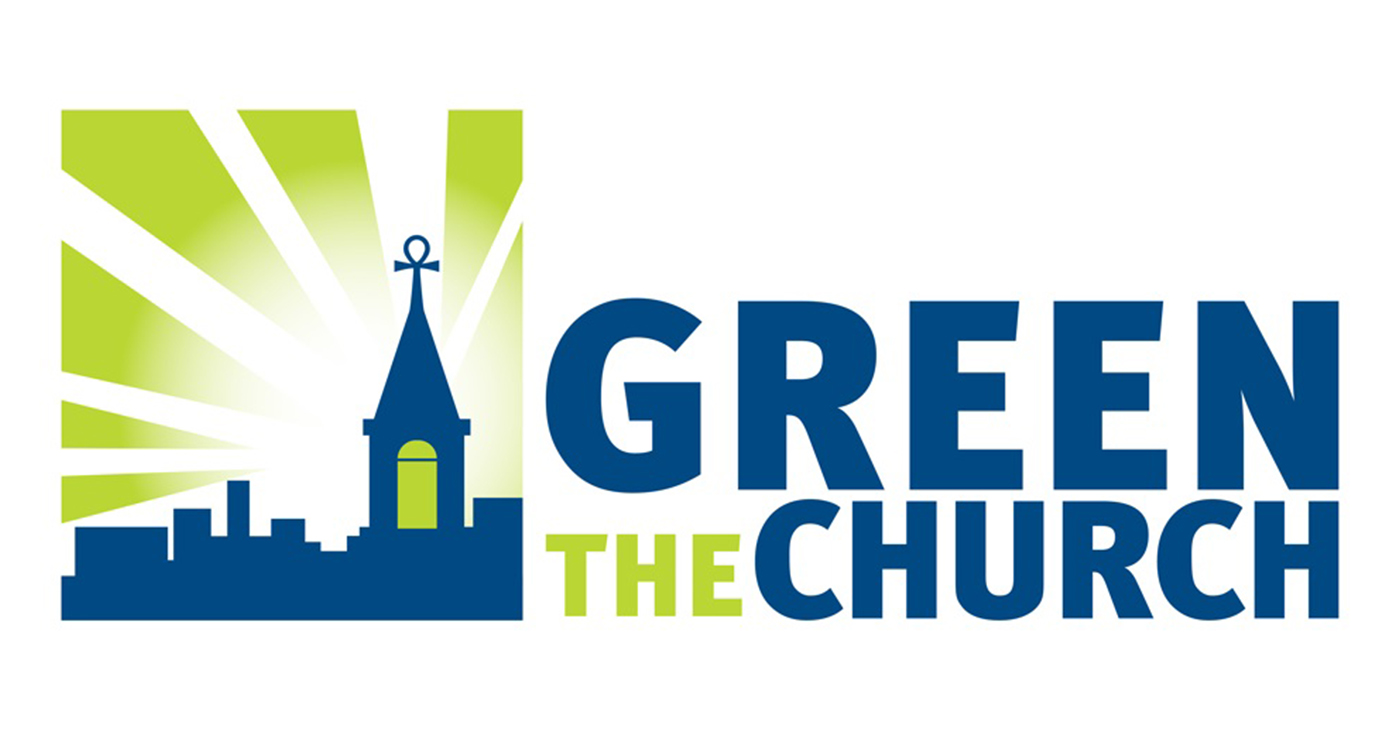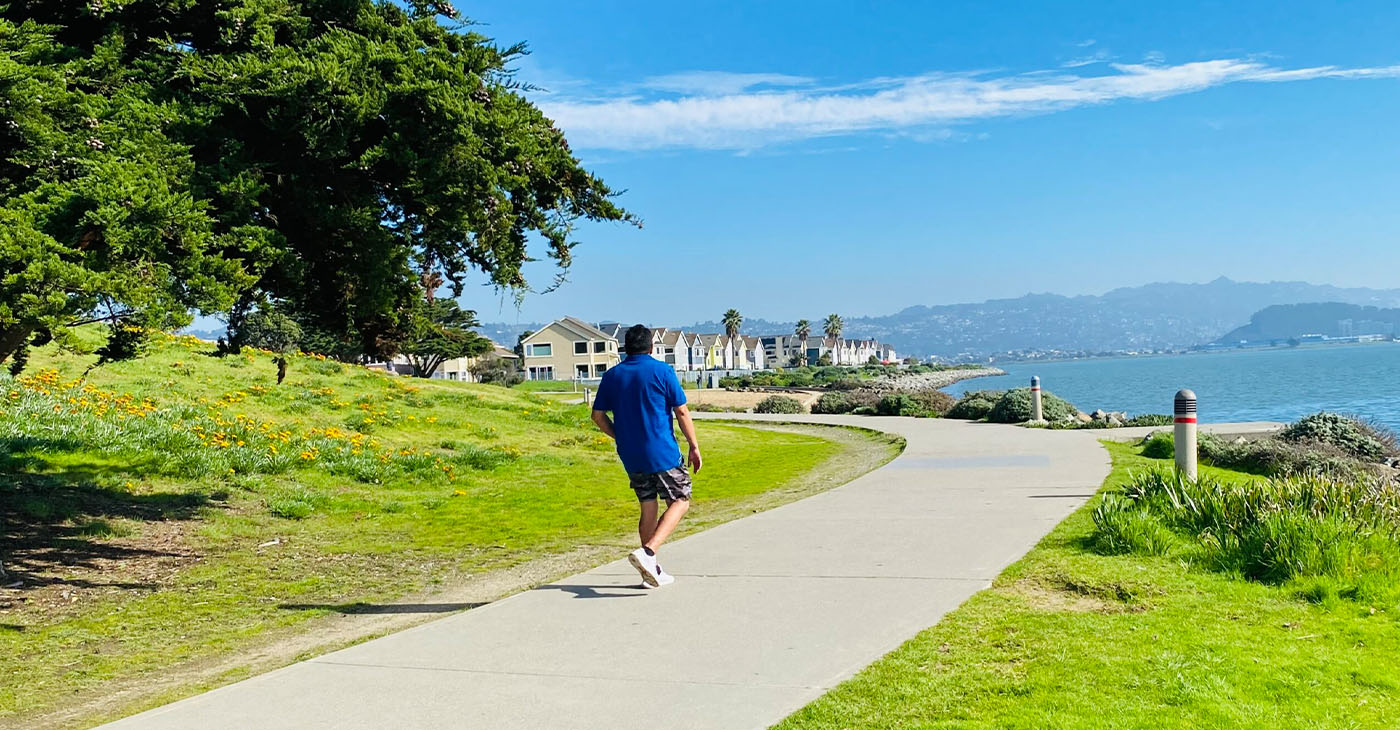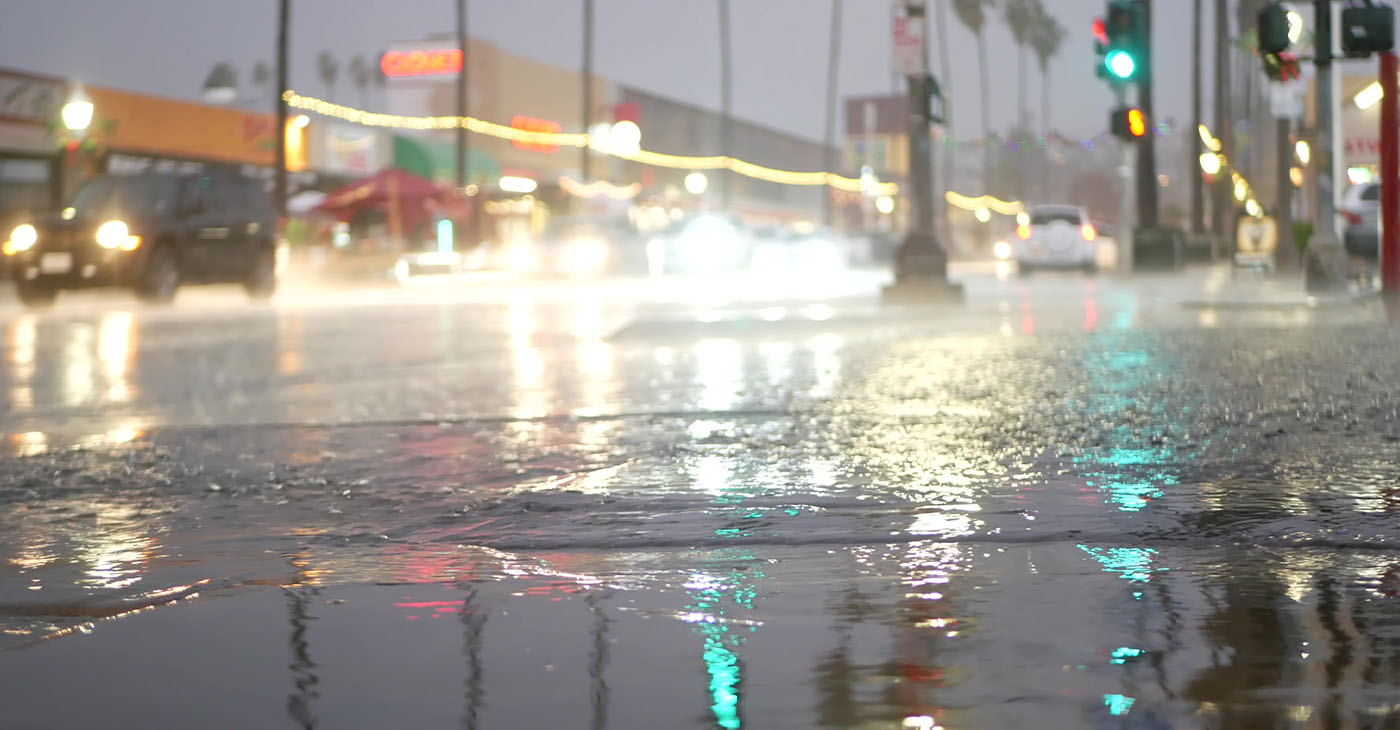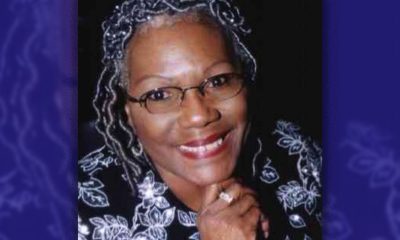Environment
Ultra Light Rail Transit is Disruptive Technology
Special to the Post
The politics of CyberTran International’s Inc. (CTI) Ultra Light Rail Transit (ULRT) system is thick.
“We don’t have engineering problems, our problems are political” said CTI President Dexter Vizinau.
“Thereis an institutional bias against by the status quo transit agencies, organization and groups,” he said. “When the automobile was first introduced horse traders hated it. When automated elevators arrived, elevator operators vehemently opposed it.
In 2008, BART conducted an ultra light rail study, which determined that the system cost one quarter of the expense of the BART system and half the cost to operate and maintain.
CybTran never allowed the study to be published due to proprietary information but it is available for review. BART is also PG&E’s biggest customer; it heavily taxes the grid.
Ultra light rail operates on solar and generates eight times more energy than it consumes.
Like buses, ultra light rail can go down wide major boulevards but have a smaller footprint because the trains are elevated. There are no drivers on these trains – therefore driver unions like BART’s union have issues with the technology.
Ultra light rail is less intrusive than BART or Bus Rapid Transit (BRT). Though it has a smaller footprint and is less costly to build it can go more places and more of it can be built. It is not always in some’s best interest to save money.
The more money spent, the more jobs are created. In April 2010, after BART lost $70 million in federal funds due to community access issues regarding the Oakland Airport Connector (OAC), Alameda County Supervisor Scott Haggerty, then the Metropolitan Transportation Commission (MTC) chair, wrote BART requesting it consider ultra light rail as a demonstration project for the airport connector.
The proposal fell on deaf ears. The OAC was built at a cost of $500 million. The cost of ultra light rail was estimated at $100 million.
The airport connector lost federal funds because it was built with no stops along the way, thereby cutting community access. Adding stops would have defeated the purpose of getting riders from BART to the airport quickly.
Multiple stations do not slow down the ultra light rail system. CybrTran’s system is direct to destination no matter where riders board and get off because their stations are not on the main line. The vehicles travel off the main line to pick up and drop off passengers.
Buses, driverless cars, bikes and shuttle services will always be great last mile solutions. But they will never be able to carry passengers over long distances, like from Oakland to Sacrament, in less than 40 minutes.
Ultra light rail trains are designed to reach speeds well over 100mph and go down major thoroughfares to highways and travel the mediums.
The California High Speed Rail (HSR) will travel at speeds over 200mph and will get riders from Los Angeles to San Francisco in just over two hours at a cost of $68 billion. Only seven stops are planned.
More stations would slow the system down. Currently, there is only $12 billion on hand to build the high-speed rail system.
Estimated cost to build a statewide network using ultra light rail is approximately $10 billion. Travel time is close to three hours on this system.
Stops do not slow the system down because the system is direct to destination.
Ultra light rail, when deployed, will expand and grow. Separate systems can be connected with lines where vehicles can travel between cities and regions.
Eventually it can be much more convenient than autos and thereby reduce oil consumption, greenhouse gases and traffic congestion.
With the help of the City of Richmond, CyberTran was able to get a federal program created to fund the demonstration of technology like ULRT.
Funds were appropriated to the program with passage of the spending bill in December 2015. The decision to release the funds is in the hands of President Obama.
CyberTran President Dexter Vizinau is hopeful that members of Congress will encourage the president to release the funding before leaving office, though institutional stakeholders want it delayed.
Activism
Oakland’s ‘Green the Church,’ Others, Host a Climate Revival
On April 20, Oakland’s Green The Church California (GTC) and the Center For Food, Faith and Justice will celebrate Earth Day and present a Climate Revival event titled “Growing Healthy Communities From Soil To The Soul” at McGee Avenue Baptist Church at 1640 Stuart St, Berkeley, CA. The day will include inspiring talks, interactive workshops, networking opportunities, and a special panel on Food Sovereignty and Global Food Resilience.

Growing Healthy Communities from Soil to the Soul in Berkeley
By Y’Anad Burrell
On April 20, Oakland’s Green The Church California (GTC) and the Center For Food, Faith and Justice will celebrate Earth Day and present a Climate Revival event titled “Growing Healthy Communities From Soil To The Soul” at McGee Avenue Baptist Church at 1640 Stuart St, Berkeley, CA,
The day will include inspiring talks, interactive workshops, networking opportunities, and a special panel on Food Sovereignty and Global Food Resilience.
The keynote speaker is Rev. Danté R. Quick, PhD, senior pastor of First Baptist Church of Lincoln Gardens in Somerset, N.J. Quick is well known in the Bay Area, having served for more than 10 years as pastor of Friendship Missionary Baptist Church in Vallejo, CA.
Green The Church, founded in 2010 by Rev. Dr. Ambrose Carroll, Sr., and headquartered in Oakland, helps galvanize Black churches and their local communities and leaders to address issues critical to populations historically disengaged from conversations around pollution and health, climate change, and sustainability and energy efficiency.
The organization collaborates with major environmental, sustainability, food security, faith, and community-based non-profit organizations, and is committed to “creation justice”—care and justice for God’s people and the planet—and building the Beloved Community.
Environmental justice has long been a pressing concern for communities of color who bear the brunt of pollution and ecological degradation. Climate change exacerbates these issues, disproportionately impacting vulnerable communities. Recognizing this urgency, Black churches across the country are taking action.
With deep roots in the African American community and its commitment to social justice, the Black Church has become an essential advocate for sustainable practices and policies.
Over the past 14 years, in a powerful collaboration with significant environmental, sustainability, food security, faith, and community-based non-profit organizations, GTC has created a cadre of Black churches engaging in the environmental justice, climate, and sustainability movement.
GTC presently works with more than 1,000 pastors and congregations across the U.S., and groups in the Bahamas, Ghana, Nigeria, and the UK, showing that we can make a difference together.
The partnership between environmental justice advocates and the Black Church extends beyond individual congregations. Green The Church provides resources and support for faith communities seeking to address climate change and promote environmental justice.
Through collaboration, initiatives such as energy efficiency programs, solar installations, and environmental education have been implemented in Black churches nationwide. These efforts reduce the carbon footprint and save money on energy bills, benefiting the congregations and their communities.
The involvement of the Black Church in the fight against climate change is not just a participation, it’s a powerful message that galvanizes action across communities.
By integrating environmental justice into their ministry, Black churches are demonstrating that addressing climate change is not only a matter of science but also of social and moral responsibility, inspiring change at a grassroots level.
For more information, go to: www.greenthechurch.org.
Bay Area
Richmond’s Growing Bay Trail Boasts Bountiful Beauty
The Standard recently enjoyed a sunny-day stroll through Richmond’s Barbara and Jay Vincent Park and an exquisite section of the city’s ample share of San Francisco Bay Trail. Near Vincent Park’s entrance, the Bay Trail offers locals a front-row view of Richmond’s Marina, with an eclectic mix of boats and some of the city’s shoreline eateries like Lara’s Fine Dining and Anh Restaurant & Bar.

By Kathy Chouteau
The Richmond Standard
When was the last time you used the Bay Trail in Richmond?
The Standard recently enjoyed a sunny-day stroll through Richmond’s Barbara and Jay Vincent Park and an exquisite section of the city’s ample share of San Francisco Bay Trail.
Near Vincent Park’s entrance, the Bay Trail offers locals a front-row view of Richmond’s Marina, with an eclectic mix of boats and some of the city’s shoreline eateries like Lara’s Fine Dining and Anh Restaurant & Bar.
Stroll further into the park on the trail and you’ll spy the Craneway Pavilion and Rosie the Riveter Park’s Visitor Center across the water, as well as ample geese—and if your timing is right—a few sailboarders getting ready to launch into San Francisco Bay.
A great kids’ playground and BBQ grills also await in the well-used park. Follow the trail around the western bend to see the park’s small but picturesque beach and clear-day views of San Francisco, the Golden Gate Bridge and more. The Bay Trail will lead you to Berkeley and beyond if you’ve got the energy.
To this reporter, who has spent lots of time here, Vincent Park and the Bay Trail are some of Richmond’s most stunning outdoor gifts for its people.
‘Gifts’ because our outdoor views don’t cost a thing yet deliver a quiet joy ready to reenergize you for the week. And for your kids and four-legged friends, there’s a world of sea creatures, shells, and other outdoor ephemera to discover after a dig in the sand.
Take it from someone who originally hails from a land-enclosed state, and a city where the most interesting hyper-local views were of the Bethlehem Steel mill in Bethlehem, Pa.
While my native city’s steel might have been used to build the Golden Gate Bridge and WWII ships, and this reporter has deep love for her hometown, trust me when I say that people in ‘the Rich’ are privy to some of the best views I’ve ever seen in our country.
According to the Trails for Richmond Action Committee (TRAC), Richmond has more than 32 miles of shoreline, which is more than any other city on San Francisco and San Pablo Bays. The Bay Trail currently has more than 300 miles completed of 500 planned for the trail around both bays. Enjoy Richmond’s bounty!
Want to learn more about the Bay Trail in Richmond? Check out TRAC.
California Black Media
After Severe Storms Kill 12, State Warns of Ongoing Dangers
State authorities and elected officials around California are thanking 8,500 first responders for their combined efforts over the past weeks to save lives during severe storms that killed 12 people, contributed to intense flooding, led to power outages, downed trees and caused more than $10 million in damages.

By California Black Media
State authorities and elected officials around California are thanking 8,500 first responders for their combined efforts over the past weeks to save lives during severe storms that killed 12 people, contributed to intense flooding, led to power outages, downed trees and caused more than $10 million in damages.
They are also directing Californians to resources to address losses they may have suffered during the storms and warning them of ongoing dangers.
“We mobilized an all-of-government response, including our swift water rescue teams that have made 47 rescues,” said Gov. Gavin Newsom. “We’re grateful to our thousands of first responders who have saved countless lives and kept our state going in the face of record-breaking rainfall and snow.”
On Feb. 4, the Governor declared a state of emergency in eight counties: Los Angeles, Ventura, Orange, San Bernardino, San Luis Obispo, Santa Barbara, Riverside and San Diego.
On Feb. 7, Newsom followed up by requesting a major disaster declaration from the White House to support San Diego County as it recovers from the storms.
“The late January storm saw record-breaking rain in San Diego, where the worst impacts were felt in lower-income neighborhoods. Many folks saw damage to their life’s work that can’t be recovered without federal support,” the Governor said.
On Feb 10, the Governor’s Office for Emergency Services (CalOES) provided safety tips for returning home aimed at Californians who had to evacuate, including how to deal with accumulated muck, mud and debris.
In Sacramento County, a 63-year-old woman was found dead under a large fallen tree in her backyard.
Effects of recent storms can weaken trees, leading to falling branches or even entire trees, which can cause damage to homes, and vehicles and pose a threat to public safety, according to Cal OES.
The sudden occurrence of toppled trees, fallen branches or uprooted trees saturated by standing water creates hazardous conditions for pedestrians, motorists, power lines and homes.
CalOES is urging Californians to stay informed about whether forecasts, and informed the public that it is still assessing storm damages.
-

 Activism4 weeks ago
Activism4 weeks agoOakland Post: Week of March 27 – April 2, 2024
-

 #NNPA BlackPress4 weeks ago
#NNPA BlackPress4 weeks agoFrom Raids to Revelations: The Dark Turn in Sean ‘Diddy’ Combs’ Saga
-

 #NNPA BlackPress4 weeks ago
#NNPA BlackPress4 weeks agoCOMMENTARY: D.C. Crime Bill Fails to Address Root Causes of Violence and Incarceration
-

 #NNPA BlackPress4 weeks ago
#NNPA BlackPress4 weeks agoCOMMENTARY: Lady Day and The Lights!
-

 #NNPA BlackPress4 weeks ago
#NNPA BlackPress4 weeks agoMayor, City Council President React to May 31 Closing of Birmingham-Southern College
-

 #NNPA BlackPress4 weeks ago
#NNPA BlackPress4 weeks agoBaltimore Key Bridge Catastrophe: A City’s Heartbreak and a Nation’s Alarm
-

 #NNPA BlackPress4 weeks ago
#NNPA BlackPress4 weeks agoBaltimore’s Key Bridge Struck by Ship, Collapses into Water
-

 #NNPA BlackPress4 weeks ago
#NNPA BlackPress4 weeks agoBeloved Actor and Activist Louis Cameron Gossett Jr. Dies at 87





















































